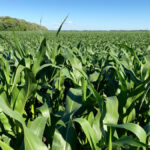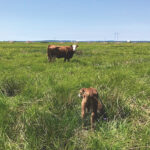Reading Time: 5 minutes Canada’s grasslands are vitally important ecosystems. They’re home to hundreds of plants and animals, including many species at risk, and they are superheroes for carbon sequestration, nutrient cycling, water storage and pollination. They’re also one of the most endangered ecosystems on the planet, with reports indicating that approximately 80 to 85 per cent of Canada’s […] Read more

Putting grasslands on a map
A national inventory project aims to quantify, identify and classify Canada’s native and tame grasslands

Getting forage crops off to a good start
Weed control and fertility are among the considerations before planting tame forage
Reading Time: 4 minutes As so often in farming, the advice on the best strategy for establishing tame pastures starts with “It depends.” “When we’re talking about general establishment considerations for all uses, we really have to look at the soil type, the texture, soil pH and how rocky it is,” says Mike Witt, a farmer, professional hydrologist and […] Read more

Choosing corn hybrids specifically for silage
Leafy floury hybrids are more digestible in the silo and in the rumen
Reading Time: 5 minutes Producers know that feeding high-quality silage can improve weight gain in beef cattle and increase milk production in dairy cows. So it makes sense to consider growing a corn hybrid bred specifically for silage rather than grain. Francis Glenn, a corn breeder and president of Glenn Seed in Ontario, saw the opportunity for silage-specific corn […] Read more

More cattle, more birds and more carbon
New Brunswick community pasture project to measure the benefits of keeping land out of annual crops
Reading Time: 6 minutes The Tantramar Marsh near Sackville, New Brunswick, is a rich biodiversity zone and serves as an important flyway for North American birds. It is also home to the Tantramar Community Pasture, 1,685 acres on Crown land established in 1961 to provide cattle producers limited land to pasture their livestock and help keep costs low. About […] Read more

Tips and tricks for successful baled silage
Don’t delay cutting, and make sure bales are a consistent size
Reading Time: 5 minutes Baled silage has several advantages over dry hay, including reduced risk and a higher-quality product when it’s made right. That was the message from Manitoba Agriculture’s livestock specialist Ray Bittner at the online Ag in Motion show in July. While a perfect season can mean a good yield of dry hay with no mould and […] Read more

